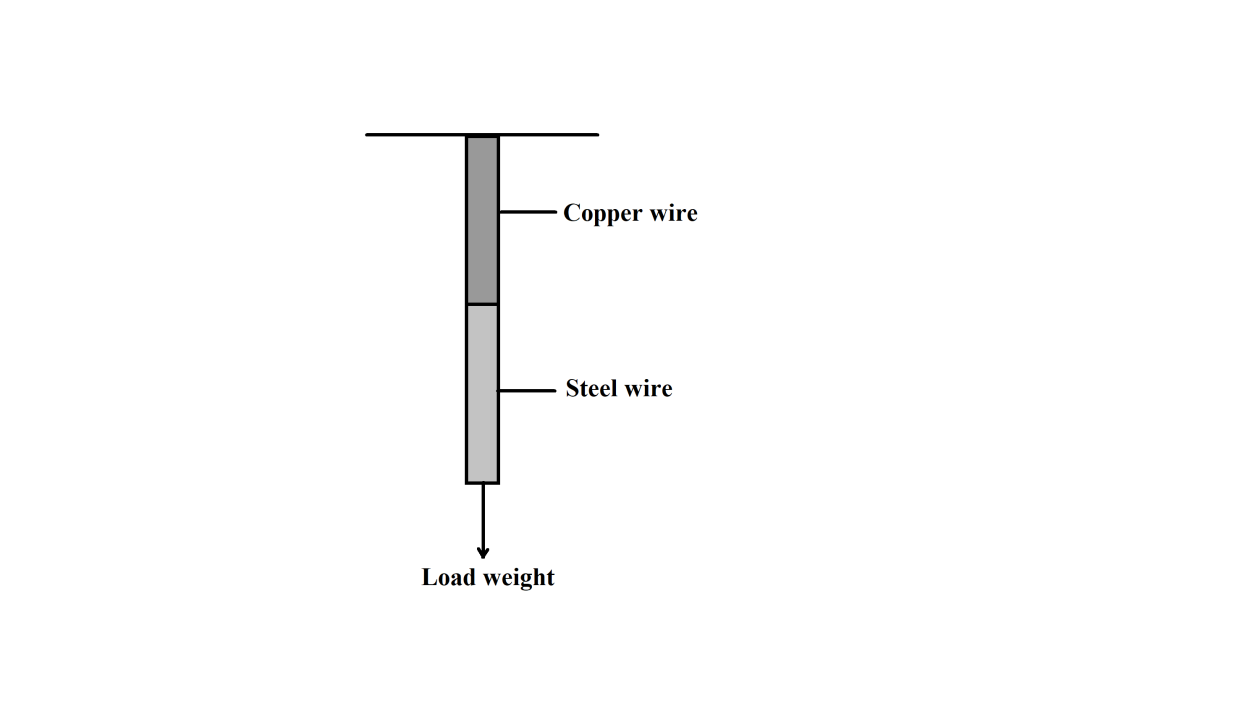Question
Question: A copper wire and a steel wire of the same length and same cross section are joined end to end to fo...
A copper wire and a steel wire of the same length and same cross section are joined end to end to form a composite wire. The composite wire is hung from a rigid support and a load is suspended from the other end. If the increase in length of the composite wire is 2.4mmthen the increase in lengths of steel and copper wires are:
(YCu=10×1010Nm−2,YSteel=2×1011Nm−2)
A. 1.2mm,1.2mm B. 0.6mm,1.8mmC. 0.8mm,1.6mmD. 0.4mm,2.0mm
Solution
For determining the relation between the extensions in the two wires, we will use the concept of Young’s Modulus. As the length and area of cross-section of both the wires are the same, therefore, we will obtain a relation between the ratio of extension in the wire and their respective young’s modulus.
Formula used:
Y=ΔlALF=ALFΔl
Complete step by step solution:
We are given that the length of Copper wire is equal to the length of Steel wire, and they both have the same area of cross section. For finding the relation in the extension in the wires, we will use the equation of Young’s Modulus. Young’s Modulus, being an internal property of an object, does not depend upon the shape and size of the body. The value of Young’s modulus is kept the same for a particular material. We have the values of Young's modulus for both the wires.

LCu=LSteelACu=ASteel
Let’s say the increase in lengths of the individual wires be ΔlCuand ΔlSteel
Total increase in the length of composite wire isΔltotal, and Δltotal=2.4mm
It means,
ΔlCu+ΔlSteel=Δltotal=2.4mm
Also, young’s modulus of elasticity Y=AΔlFl
It gives, Δl=AYFL
Now,
ΔlCu=ACuYCuFLCu=AYCuFL
ΔlSteel=ASteelYSteelFLSteel=AYSteelFL
Dividing the above two equations,
ΔlSteelΔlCu=YCuYSteel
Putting values of YSteelandYCu,
ΔlSteelΔlCu=10×10102×1011
ΔlSteelΔlCu=2
The extension in Copper wire will be double of the extension in steel wire.
As we have,
ΔlCu+ΔlSteel=Δltotal=2.4mm
PutΔlCu=2ΔlSteel
We get,
ΔlSteel=0.8mmΔlCu=2ΔlSteel=1.6mm
Therefore,
ΔlSteelis 0.8mmand ΔlCuis 1.6mm
Hence, the correct option is C.
Note: Students should keep in mind that Young’s modulus of a material is a fundamental property of every material that cannot be changed. For a particular material, such as Copper and Steel, young’s modulus is kept constant. If two materials have the same length and area of cross-section, the ratio of extension in the length of the wires will be inversely proportional to the ratio of young’s modulus of the two materials.
